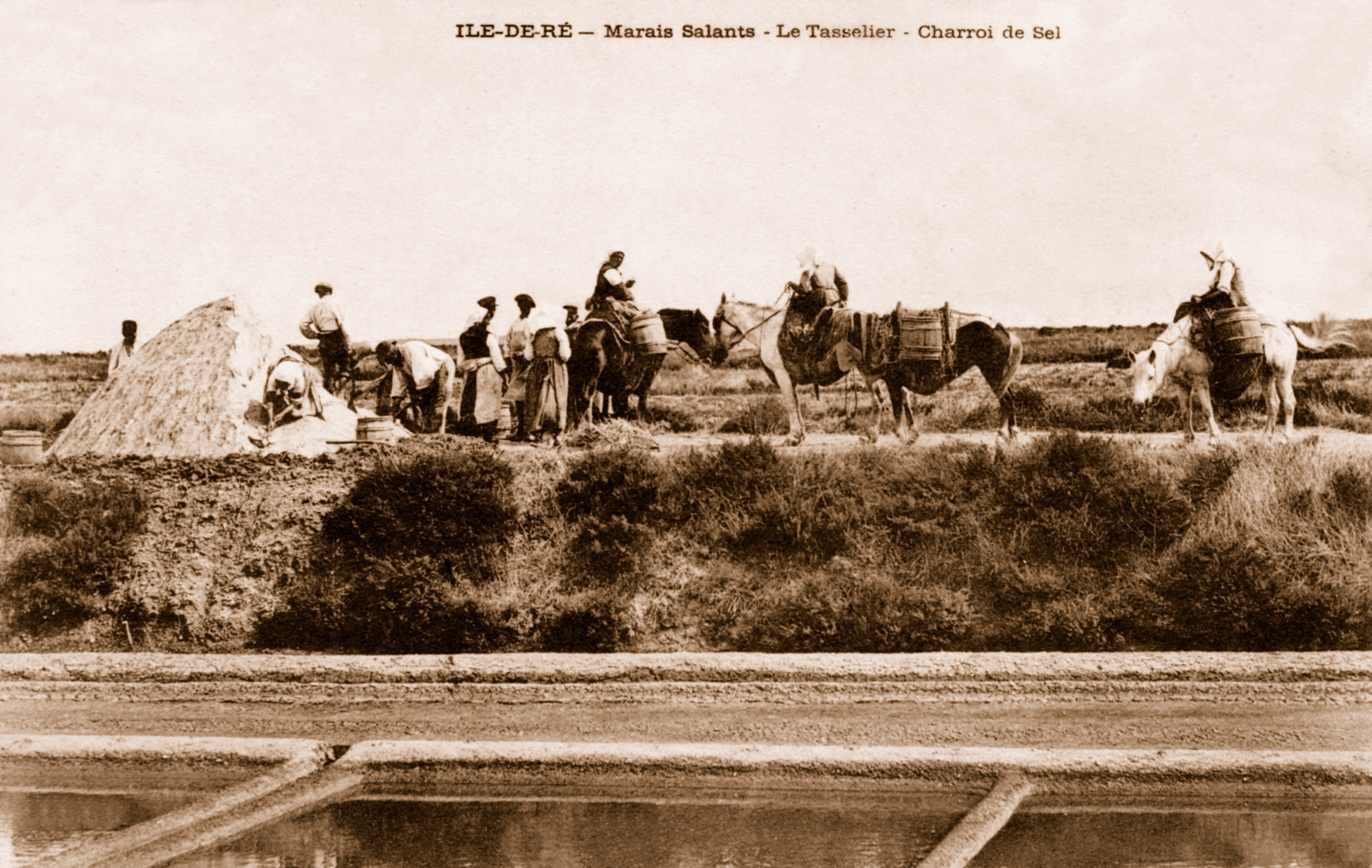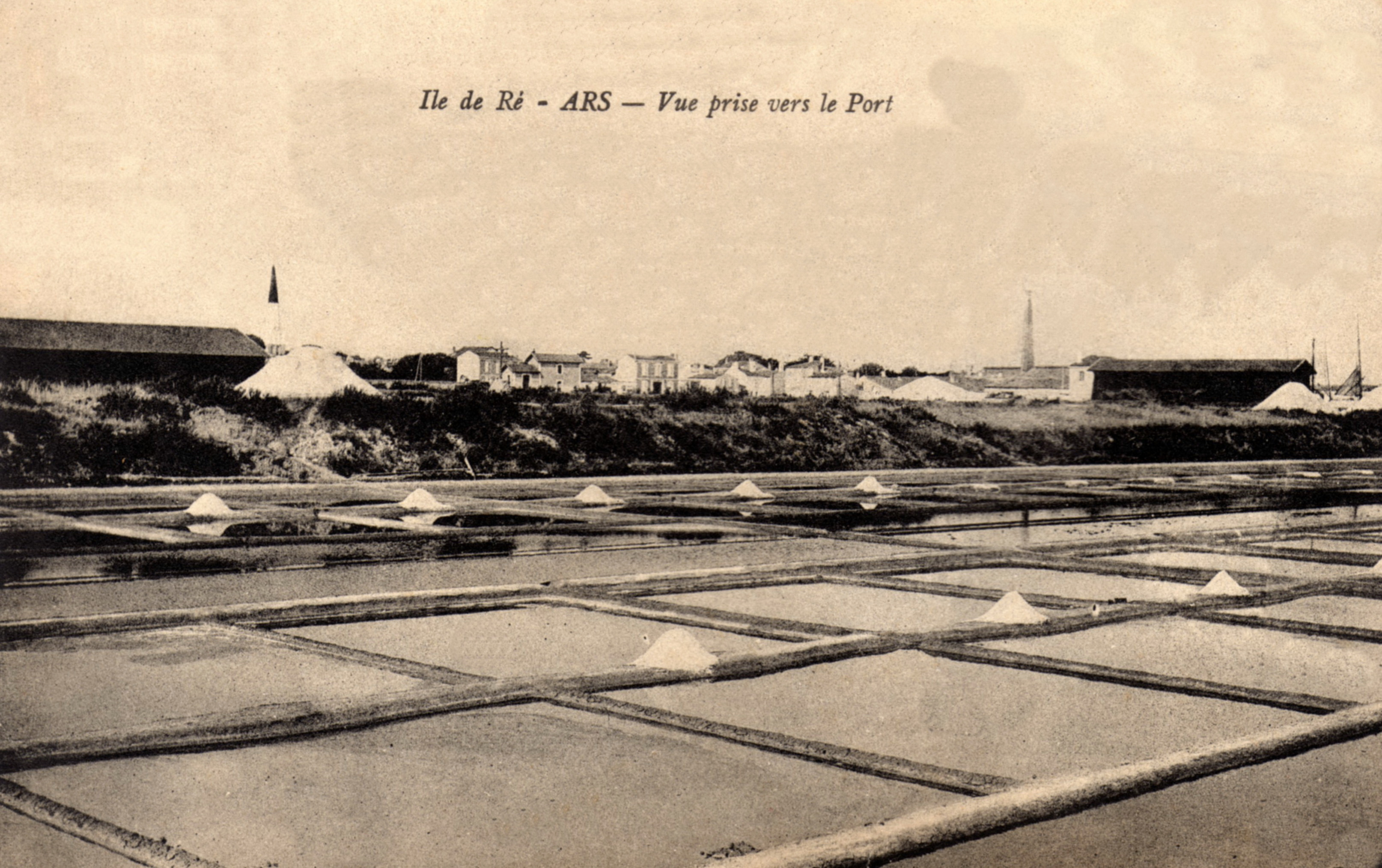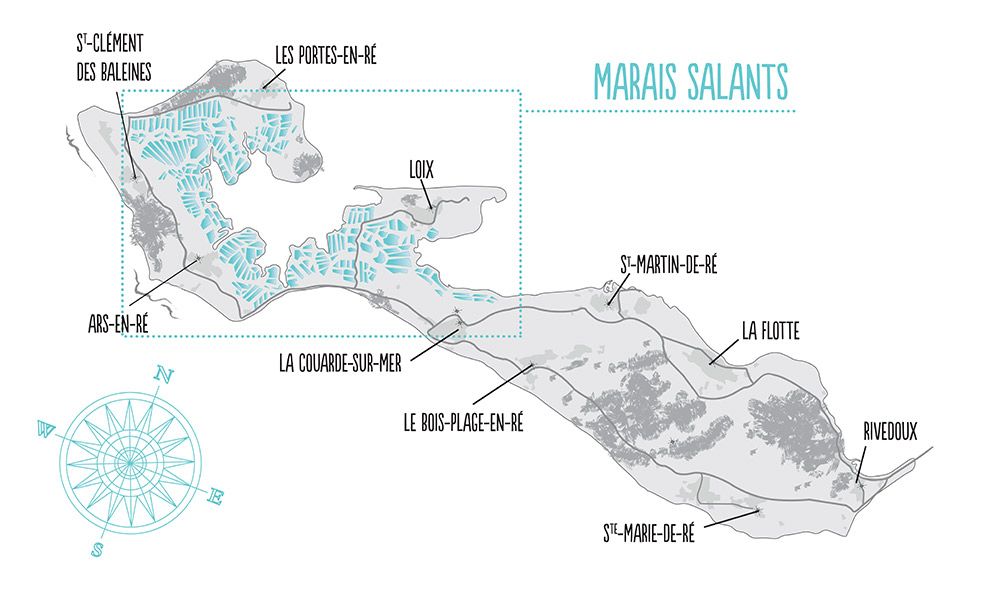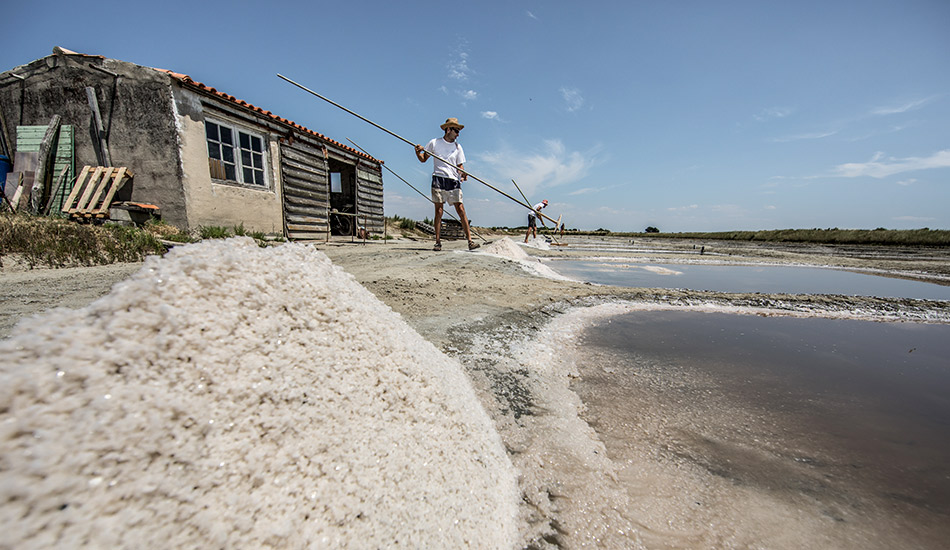MIDDLE AGE TO THE 21ST CENTURY
At the beginning of the 11TH century, the islets of Loix and Ars are donated by William the Great to the monks of the Abbey of St-Michel-en-l'Herm, Vendée.

At the end of the Middle Ages, the monks decided to make their lands on Ré Island profitable by building salt marshes. The island was nicknamed Ré-La-Blanche, in reference to the color of the "mountains" of salt that appeared in the salt marshes. From the Middle Ages to the 19th century, the salt marshes helped to ensure the economic prosperity of the region. "White gold" was exported throughout the kingdom and in northern Europe (Germany, the Netherlands, Denmark ...).

During the peak of salt production in the 19th century, nearly 20% of Ré Island’s territory was exploited to produce nearly 30,000 tons a year. The railroad and the industrial revolution was a blow to the salt business on Ré Island. The salt farmers start to abandon their salt marshes in the face of the collapse of the price of salt and a difficult economic situation. The activity declines but then experiences a real revival in the early 1990s.
 © 2017 - L'Encre Invisible
© 2017 - L'Encre Invisible
FROM THE 90s TO TODAY
After a period of decline, the salt farming business is now reviving thanks to a cooperative of about 70 members (out of a total of 100 salt farmers on the island) who continue the tradition. This profession contributes to the identity of the landscape of Ré Island and local culture.

© 2017 - Julien Roche
 © Julien Roche
© Julien Roche
